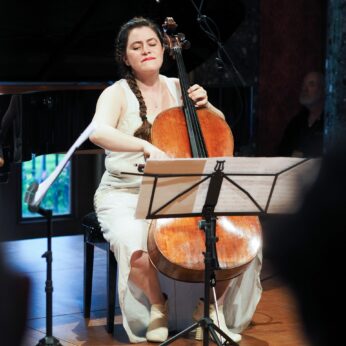Composer: Johann Sebastian Bach (b. 1685 - d. 1750)
Performance date: 04/07/2019
Venue: St. Brendan’s Church
Duration: 00:18:44
Recording Engineer: Gar Duffy, RTÉ
Instrumentation: vc
Instrumentation Category:Solo
Artists:
Emmanuelle Bertrand -
[cello]

Johann Sebastian Bach [1685-1750]
Cello Suite No.3 in C major, BWV 1009 [circa 1720]
Prélude
Allemande
Courante
Sarabande
Bourrées I and II
Gigue
As I pursued my study of the Suites, an unknown world of grandeur and beauty opened up before my eyes. The emotions I felt in the course of this long process are among the purest and most intense of my artistic life. Pablo Casals
The great Catalan cellist reputedly discovered the scores of the Cello Suites in a second-hand bookshop. He then spent twelve years studying them before unveiling them at the Prades Festival in 1950 on the bicentenary of Bach’s death. Nowadays we recognise the supreme beauty of this music but early audiences were less easily convinced. Where once this music was considered cold and intellectual, we now find it austere but deeply moving, while the Gigues can set the most recalcitrant feet tapping. By using the instrument’s total range, sometimes with the help of double stopping, Bach succeeds in fostering the illusion of real harmony involving several contrapuntal lines: in reality there is only a single written part.
The Third Suite positively rejoices in the extrovert and confident key of C major. Openness, riches, magnanimity are on offer here, presented in a generous and open-hearted embrace. The Allemande is stately and elegant followed by a Courante so full of energy that it scarcely draws breath. In Bach’s hands the Sarabande takes on a formal, almost ritual character full of grave beauty. The Bourrées offer a divertissement after the serious demeanour of the Sarabande, plain-spoken but humorous. The Gigue is a celebration of the dance, where the dance floor can scarcely contain the overflowing spirits.
– Francis Humphrys
Copyright © 2024 West Cork Music. All rights reserved.
Designed and developed by Matrix Internet